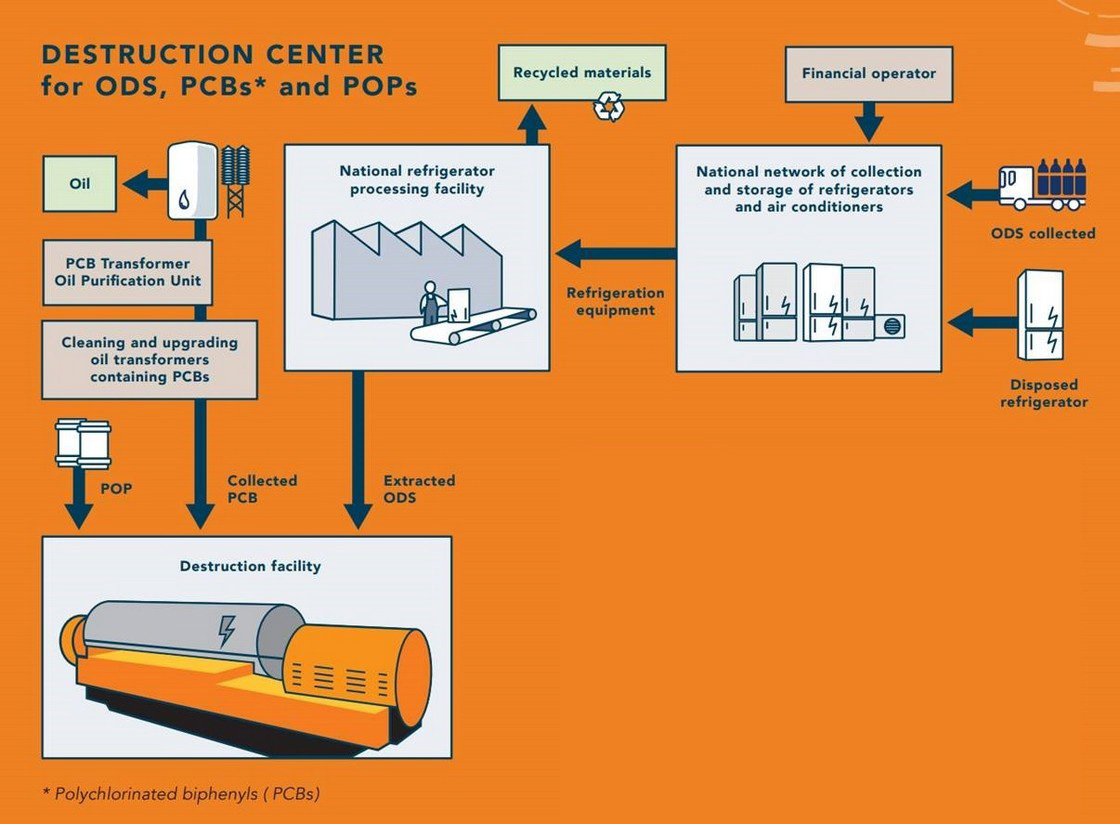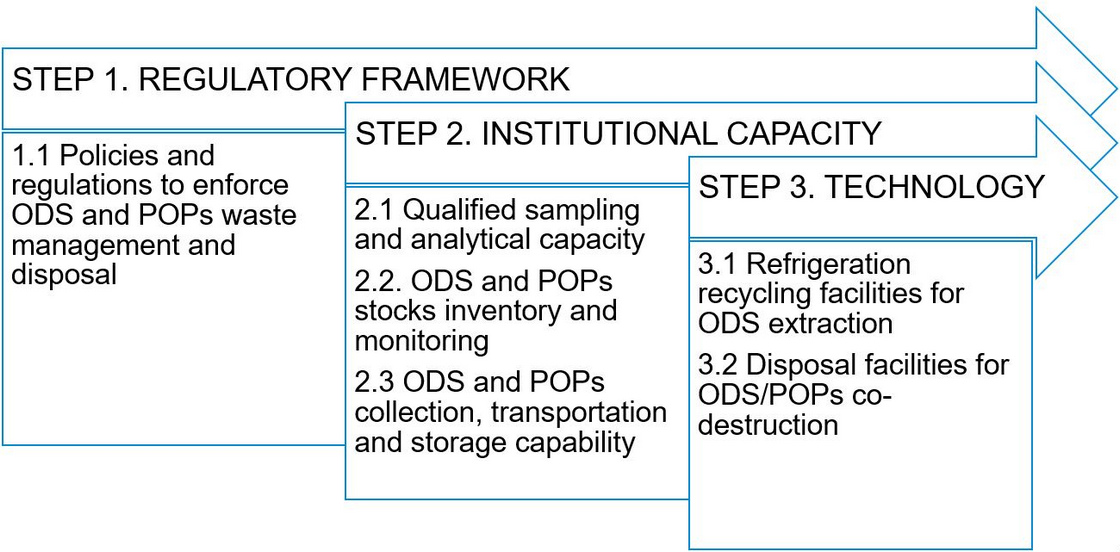Comprehensive Waste Management Framework For ODS and POPs
Introduction
Ozone-depleting substances (ODS) were once widely used in major manufacturing sectors. Chlorofluorocarbons (CFCs) and hydrochlorofluorocarbons (HCFCs) were used in refrigerators, air conditioners, foam and aerosol sprays; HCFCs and halons were used in fire extinguishers; while methyl bromide was used as a pesticide to treat crops, soil and international trade goods. Under the Montreal Protocol, countries around the world have taken great lengths to phase-out ODS from their production processes. There are still countless stockpiles of ODS around the world, stored inside refrigerators, air-conditioners, aerosols and foams. When these are sent to landfill, the ODS slowly leaks into the atmosphere, causing serious harm to the ozone layer and contributing to climate change.
Persistent Organic Pollutants (POPs) are toxic organic chemicals. They include industrial chemicals like PCBs and by-products from industrial processes, chemical manufacturing and resulting wastes. POPs can be found in synthetic PCBs, transformers, capacitors and other equipment. Due to a combination of their physical and chemical properties, after release into the environment, they remain intact for many years and become widely distributed throughout the environment (soil, water and, most notably, air). Additionally, POPs accumulate in the fatty tissue of living organisms including humans, so they pass on from one species to another along the food chain. Under the Stockholm Convention, countries around the world are working to eliminate hazardous POPs worldwide.
ODS/POPs waste management system
To support the target countries in meeting their commitments under the Montreal Protocol and Stockholm Convention, the project aims to establish a comprehensive waste management system for the collection and destruction of ODS and POPs wastes.

This system relies on robust policy, regulatory and institutional frameworks for the control, collection, recovery and treatment of these waste streams. This includes legislation, but also, the institutional capacity of qualified state bodies, the analytical capability of laboratories and data tools to monitor stocks and waste streams. Finally, this system requires the adequate infrastructure and technology to dispose of ODS and POPs in an environmentally sound manner.
This can be summarized in three simplified steps:

Step 1. Regulatory framework
National ODS legislation must encompass the collection and destruction of ODS, ban ODS venting, and include procedures for servicing and end-of-life recovery of ODS containing. POPs legislation should encompass bans or restrictions on the use of POPs, minimize the environmental release of POPs formed as industrial by-products, ensure that stockpiles are safely managed, and enable the environmentally sound disposal of POPs wastes. Regulations on how the national legislation will be enforced are necessary, as are qualified enforcement bodies.
Step 2. Institutional capacity
The management and destruction of ODS and POPs wastes has to be included in the roles and responsibilities of qualified state bodies, such as environmental protection agencies. Another key criteria is the adequate training and certification of the involved personnel.
A collection system for ODS and POPs wastes and a logistic concept has to be established. These depend on the targeted sectors, existing waste collection infrastructure within the country and geographical conditions. Finally, a financing mechanism for the collection and destruction of ODS and POPs is required, to ensure the long-term sustainability of disposal activities.
Step 3. Technology
Recycling equipment for the recovery of ODS and destruction technology adequate for the expected ODS and POPs waste streams has to be made available in the country or the region.
